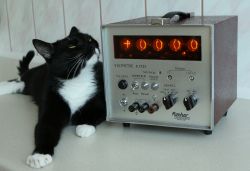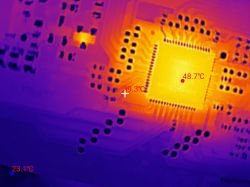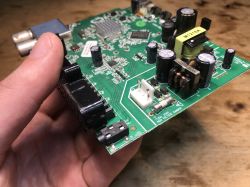FAQ
TL;DR: 1.51 V ± 0.01 V regulated output until the Li-ion cell drops below 3.15 V [Elektroda, mipix, post #20913806] “Closer to a power bank than to an AA battery” [Elektroda, mipix, post #20913400] Capacity logged at 3.35 Wh per cell [Elektroda, mipix, post #20962456] Why it matters: Knowing cut-off, capacity and charging quirks prevents device damage and false runtime assumptions.
Quick Facts
• Nominal output: 1.51 V DC (ripple almost undetectable) [Elektroda, mipix, post #20912923]
• Discharge profile: 1.51 V (4.2–3.15 V cell) → 1.10 V (3.14–2.80 V) → 0 V (≤2.80 V) [Elektroda, mipix, post #20913806]
• Measured stored energy: 3.35 Wh (≈2.3 Ah @1.5 V) after USB-C charge [Elektroda, mipix, post #20962456]
• Stated max discharge current: 3.5 A for LC9205D IC (datasheet) *LC9205D datasheet*
• Typical retail price: PLN 13.50 per AA cell with USB-C port (2024 import) [Elektroda, mipix, post #20962456]
How does the USB-C AA battery shut down when empty?
The converter keeps 1.51 V output while the internal Li-ion cell stays between 4.20 V and 3.15 V. It then steps to 1.10 V until 2.80 V, after which it cuts output to 0 V without prior warning [Elektroda, mipix, post #20913806]
Can I recharge and power a device simultaneously?
No. When 5 V is applied on USB-C the battery presents 5 V at its terminals, so simultaneous charge-and-use would feed 5 V into a 1.5 V device and may destroy it [Elektroda, mipix, post #20913400]
What real capacity should I expect compared with alkaline AA?
One measured cell stored 3.35 Wh, equal to about 2.3 Ah at 1.5 V [Elektroda, mipix, post #20962456] Fresh alkaline AA averages 3.75 Wh (≈2.5 Ah) [IEC 60086]. Expect roughly 60–70 % of high-grade alkaline runtime.
Is there over-current protection?
The LC9205D IC claims 3.5 A peak discharge capability and includes short-circuit shutdown [LC9205D datasheet]. Forum tests up to 140 mA continuous showed stable voltage but motors were untested [Elektroda, mipix, post #20912923]
Why did one brand-new cell leak electrolyte?
Production defects or shipping abuse can rupture the Li-ion pouch; the opened January 2024 cell was only one month old and already corroded [Elektroda, mipix, post #20912923] "New doesn’t guarantee good," notes a member [Elektroda, LEDówki, post #20915557]
Will low-power clocks and remotes benefit?
Yes. Loads under 140 mA draw see long, flat 1.51 V, ideal for quartz clocks and IR remotes [Elektroda, mipix, post #20912923] A wall clock trial is underway [Elektroda, mipix, post #20915435]
Are these cells eco-friendly?
Each cell contains a Li-ion pouch, boost/buck converter and charger, adding e-waste complexity versus simple NiMH. One post calls it “littering” because every battery carries extra electronics [Elektroda, LEDówki, post #20915557]
Do NiMH cells still beat Li-ion AA on cycle life?
Quality NiMH often handle 500–1000 full cycles, while typical pouch Li-ion manages 300–500 [IEC 61960]. Therefore NiMH may outlast USB-C AA in heavy-use scenarios.
How can I estimate capacity without a specialised tester?
- Attach a 10 Ω, 0.5 W resistor.
- Record start time; discharge until output falls to 1.10 V.
- Capacity (Ah) ≈ time (h) × 0.15 A. This ignores the last 10 % but yields useful approximation [Elektroda, Jacek Rutkowski, post #20962492]
What happens if I charge through a multi-port USB-C splitter?
Older fast-charge standards like Quick Charge 2.0 raise bus voltage on all branches, so parallel-charging several cells through a passive splitter can expose them to >9 V and damage electronics [Elektroda, mipix, post #20913962]
Edge case: will my multimeter buzz on a 9 V Li-ion substitute?
Yes. One user’s meter squealed due to converter noise in a 9 V lithium pack, despite normal behavior on alkaline or NiMH [Elektroda, mipix, post #20915496]
Can I get versions without USB-C?
Yes. Some Li-ion AA ship without a port and need a matched charger cradle [Elektroda, mipix, post #20915435] They free space for a larger cell but sacrifice universal charging.






